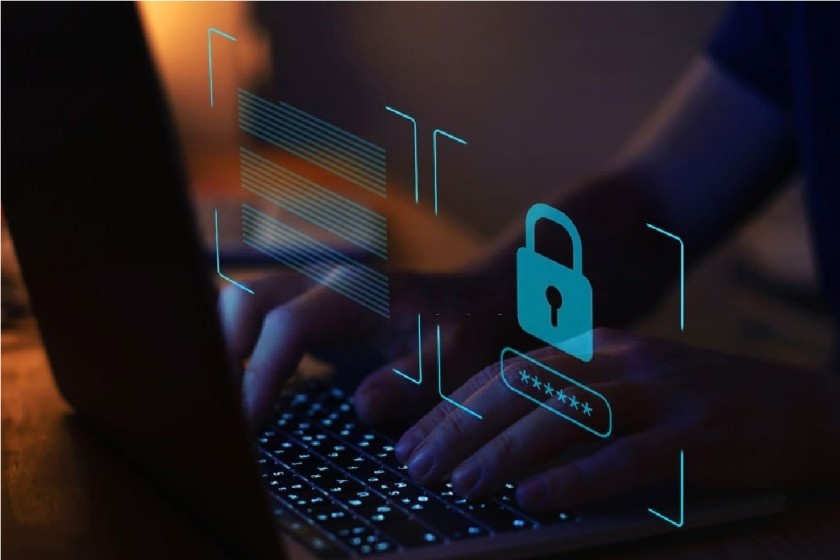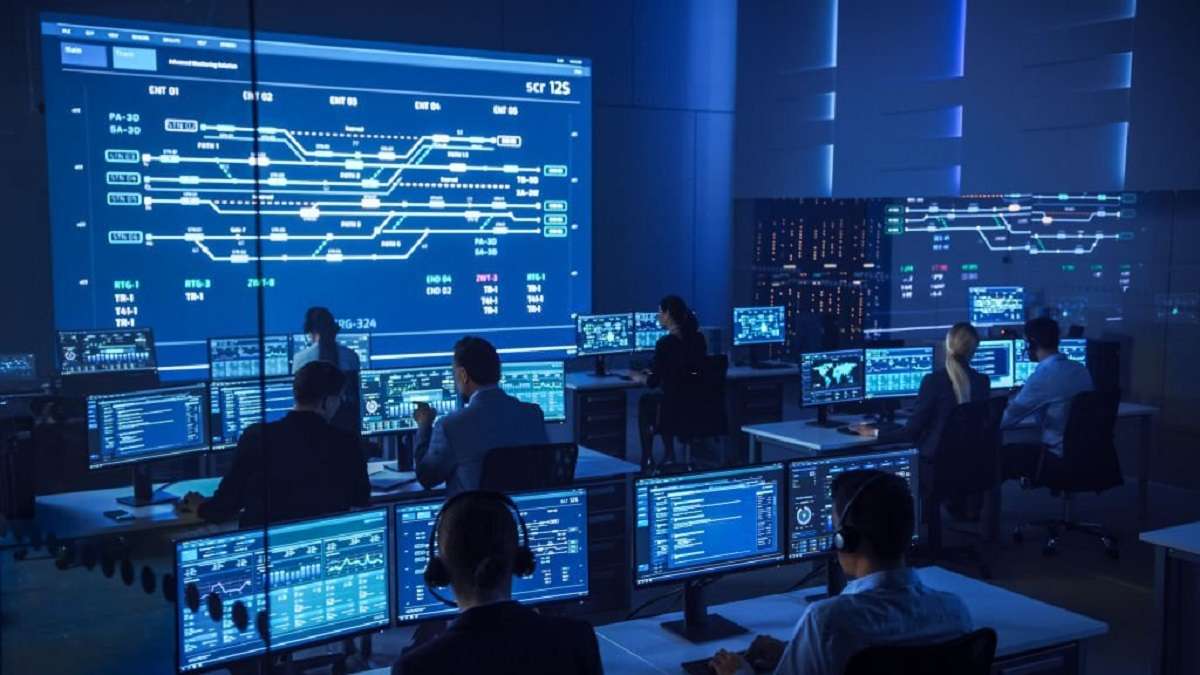In our fast-paced society, Security is crucial. Businesses, regardless of size or large corporations, are investing heavily in strong security measures to protect their buildings employees, assets, and property. A key element of this security system is the creation of a properly equipped and effective Security Control Room. This article focuses on the importance of its essential components and its function in enhancing security and security.
Table of Contents
- 1. Introduction: The Importance of a Security Control Room
- 2. Designing an Effective Security Control Room
- 3. Essential Components of a Security Control Room
- 4. Monitoring and Surveillance Operations
- 5. Benefits of a Well-Equipped Security Control Room
- 6. Integrating Technology in Security Control Rooms
- 7. Challenges and Considerations in Security Control Room Setup
- 8. The Significance of a Well-Designed Security Control Room for Enhanced Safety and Surveillance
- FAQs
What is the role and purpose of a security control room?
The control room enables security personnel to have a comprehensive view of the security landscape. By monitoring surveillance systems, access control systems, alarm systems, and other security technologies, operators can gather real-time information and maintain situational awareness of potential threats, incidents, or suspicious activities.
- How does a security control room monitor and respond to security incidents?
The control room continuously monitors a range of security systems, including CCTV cameras, access control systems, intrusion detection systems, fire alarms, and other sensors. These systems provide real-time information about activities and events within the monitored areas
- How does a security control room coordinate with security personnel on the ground?
The control room establishes reliable communication channels with security personnel on the ground. This can include two-way radios, telephones, intercom systems, or dedicated communication software.
1. Introduction: The Importance of a Security Control Room
It serves as the nerve center of a comprehensive security system. It is a dedicated space where security personnel can monitor and manage all security-related activities. By integrating various security technologies and systems, a control room provides real-time surveillance, incident response, and centralized control. With trained operators at the helm, It ensures swift and effective security operations.
2. Designing an Effective Security Control Room
Designing an effective security control room involves careful planning and consideration. Factors such as room layout, ergonomic design, visibility, and equipment placement play a vital role in creating an optimal environment for security personnel. The control room should be designed to minimize distractions, maximize situational awareness, and facilitate efficient communication.
3. Essential Components of a Security Control Room
A well-equipped comprises several essential components that ensure comprehensive surveillance and monitoring. These components include:
3.1 Video Monitoring Systems
Video monitoring systems form the backbone of a room. High-definition cameras strategically placed throughout the premises provide real-time video feeds. These feeds enable operators to monitor critical areas, detect potential threats, and initiate appropriate responses promptly.
3.2 Access Control Systems
Access control systems regulate entry and exit points within a facility. By integrating access control systems with the control room, operators can monitor and control access permissions, detect unauthorized access attempts, and respond accordingly. This helps prevent security breaches and ensures that only authorized individuals have access to restricted areas.
3.3 Alarm and Incident Management Systems
Alarm and incident management systems are crucial in a room. They enable operators to receive and respond to alarms, alerts, and incidents effectively. By centralizing incident management, can streamline response procedures, coordinate with emergency services, and mitigate potential threats swiftly.
3.4 Communication Systems
Effective communication is essential for seamless security operations. Control rooms utilize advanced communication systems, such as two-way radios, intercoms, and integrated voice-over-IP (VoIP) solutions, to facilitate instant communication between operators, on-site security personnel, and other stakeholders. Clear and efficient communication ensures swift incident response and coordination.

4. Monitoring and Surveillance Operations
The primary function of a security room is to monitor and conduct surveillance operations. Here are some key aspects of these operations:
4.1 Live Video Monitoring
Live video monitoring enables operators to observe real-time video feeds from surveillance cameras. By actively monitoring these feeds, control room operators can identify suspicious activities, potential threats, and safety hazards. They can then take appropriate action to mitigate risks and maintain a secure environment.
4.2 Incident Response and Management
When an incident or security breach occurs, control room operators play a pivotal role in responding promptly and effectively. They assess the situation, alert relevant personnel, and coordinate the response effort. By utilizing predefined protocols and collaborating with on-site security teams, room operators can ensure a swift and coordinated response to mitigate the impact of security incidents.
4.3 Access Control Monitoring
Control rooms also monitor access control systems to detect any anomalies or unauthorized access attempts. Operators can review access logs, identify suspicious behavior, and intervene if necessary. This proactive monitoring helps prevent potential security breaches and safeguards sensitive areas.
4.4 Alarm Monitoring and Response
Alarms play a critical role in alerting security personnel to potential threats or emergencies. Control room operators receive and respond to alarms promptly, verifying their legitimacy and taking appropriate action. By integrating alarm systems with surveillance and access control, control rooms enhance their ability to respond effectively to alarms and mitigate risks.

5. Benefits of a Well-Equipped Security Control Room
A well-equipped security control room offers several benefits to organizations:
5.1 Security Control Room: Prompt Emergency Response
By centralizing security operations and monitoring, control rooms facilitate swift emergency response. Operators can quickly assess situations, notify relevant personnel, and coordinate with emergency services when required. This timely response helps minimize the impact of emergencies and ensures the safety of individuals and assets.
5.2 Security Control Room: Proactive Threat Detection
Control rooms enable proactive threat detection through continuous monitoring. By analyzing real-time video feeds and data from various security systems, operators can identify potential threats at an early stage. This proactive approach allows for preemptive action, preventing incidents before they escalate.
5.3 Effective Incident Management
In the event of a security incident, control rooms excel in managing the situation effectively. Operators follow predefined protocols, ensuring a standardized response and minimizing the potential for errors. By coordinating with on-site security teams and emergency services, control rooms optimize incident management and resolution.
5.4 Centralized Monitoring and Control
It provides centralized monitoring and control of security systems and operations. Operators have a comprehensive view of the entire facility, allowing them to detect and respond to incidents in real time. Centralization ensures that all security measures work cohesively, maximizing efficiency and effectiveness.
5.5 Enhanced Operational Efficiency
By automating processes and integrating various security technologies, control rooms enhance operational efficiency. Operators can multitask, monitor multiple feeds simultaneously, and analyze data efficiently. This optimization of resources and workflows leads to improved security outcomes and cost-effectiveness.

6. Integrating Technology in Security Control Rooms
The evolving landscape of security technology offers new possibilities. Here are some key technological advancements:
6.1 Artificial Intelligence and Video Analytics
Artificial intelligence (AI) and video analytics are revolutionizing. AI-powered algorithms can automatically detect and analyze suspicious activities, facial recognition, and object tracking. This technology enhances the efficiency of control room operators, enabling them to focus on critical events and potential threats.
6.2 Remote Monitoring and Mobile Access
Advancements in remote monitoring technology enable control room operators to monitor security systems and video feeds remotely. Mobile access allows operators to stay connected and respond to incidents even when they are away from the control room. This flexibility enhances the overall responsiveness of the security infrastructure.
6.3 Data Integration and Analysis
Integrating data from various security systems, such as video surveillance, access control, and alarms, provides a holistic view of security operations. Control rooms can leverage data analysis tools and software to identify patterns, uncover vulnerabilities, and make data-driven decisions to improve security measures.
7. Challenges and Considerations in Security Control Room Setup
While control rooms offer immense benefits, certain challenges and considerations should be addressed:
7.1 Ergonomics and Operator Comfort
Designing control rooms with ergonomic considerations ensures operator comfort and productivity. Ergonomic furniture, adjustable consoles, and proper lighting reduce operator fatigue and enhance their ability to perform effectively during long hours of surveillance and incident management.
7.2 Scalability and Future-Proofing
Control room design should accommodate future expansions and technology upgrades. Scalability ensures that the control room can adapt to evolving security needs and accommodate additional equipment or personnel as required.
7.3 Redundancy and Backup Systems
To ensure uninterrupted operations, control rooms should have redundancy and backup systems in place. Redundant power supplies, backup servers, and failover mechanisms minimize the risk of system failure and guarantee continuous surveillance and incident response capabilities.

8. The Significance of a Well-Designed Security Control Room for Enhanced Safety and Surveillance
A well-designed and well-equipped is a vital component of any comprehensive security strategy. It provides real-time monitoring, incident response, and centralized control, enhancing safety and surveillance. By integrating advanced technologies and considering ergonomic factors, organizations can establish control rooms that effectively mitigate security risks and ensure the protection of their assets and personnel.
FAQs
A security control room serves as a centralized hub for monitoring, managing, and responding to security incidents. It ensures the safety and surveillance of a designated area or premises.
A security control room requires infrastructure such as high-resolution monitors, video walls, communication systems, access control systems, and alarm systems. Monitoring and surveillance systems such as CCTV cameras and motion sensors are also crucial.
Security control rooms are equipped with well-defined operational procedures and protocols for handling emergencies. Operators are trained to assess risks, coordinate with on-site security personnel, and dispatch emergency services when necessary.
A well-equipped security control room acts as a deterrent, increases situational awareness, and enables

